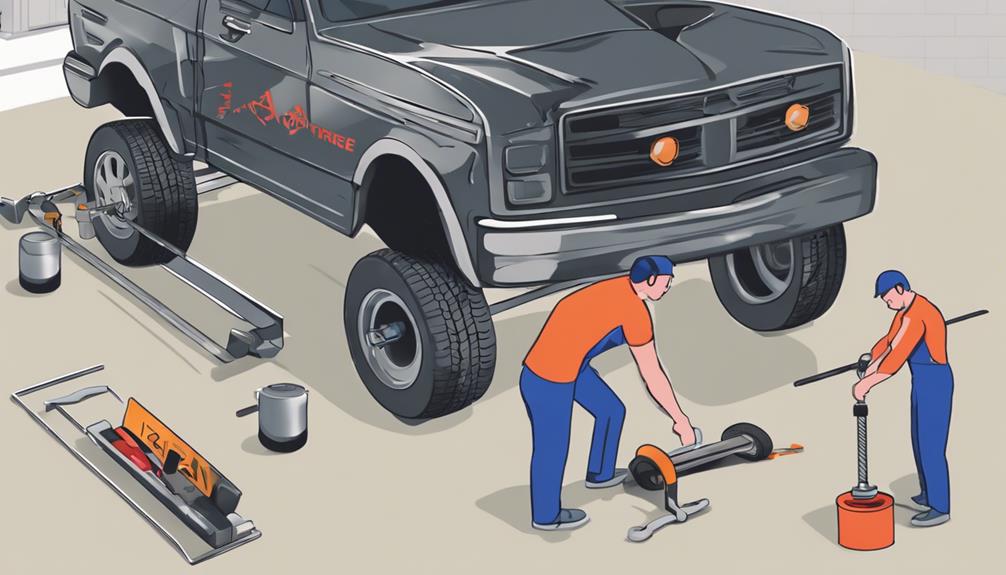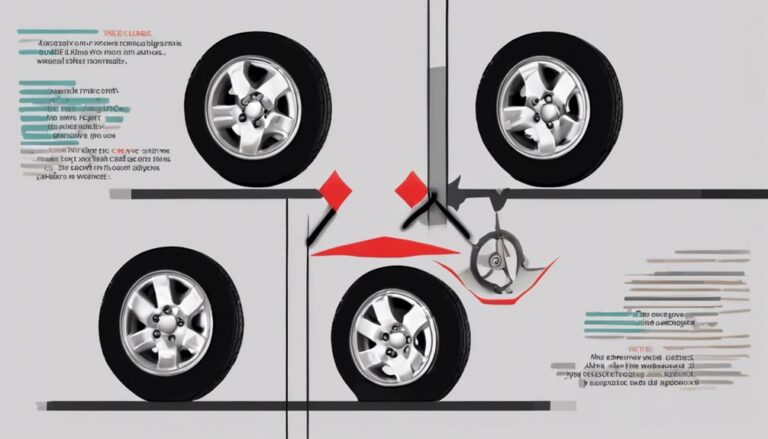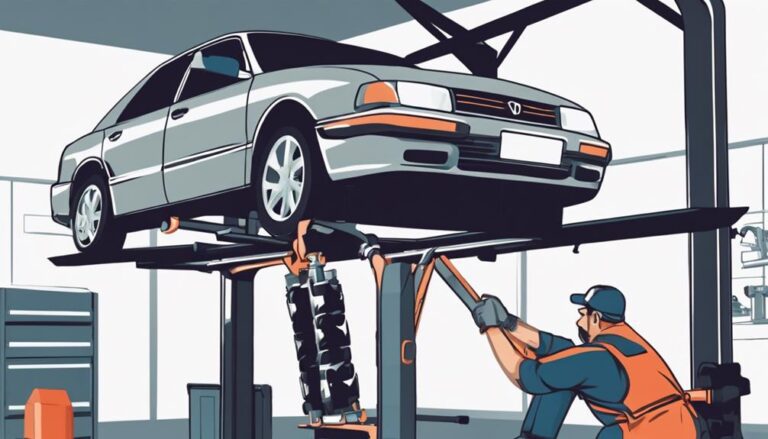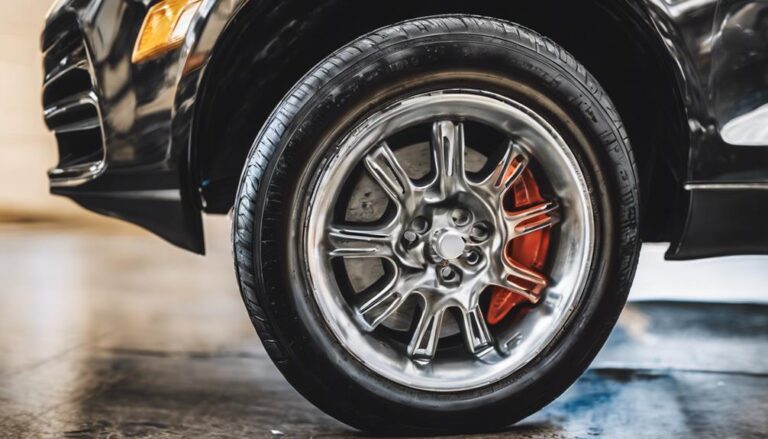Efficient DIY Tire Rotation and Alignment Tips
When it comes to maintaining your vehicle's tires, efficiency is key. Imagine being able to tackle tire rotation and alignment with ease, saving time and ensuring optimal performance.
But how can you achieve this level of precision on your own? Let's explore some practical tips and techniques that can empower you to take control of your tire maintenance routine and keep your wheels rolling smoothly for miles to come.
Key Takeaways
- Regular tire rotation maintains longevity and even wear, enhancing vehicle stability and safety.
- DIY techniques include following rotation patterns, checking wear indicators, and using proper tools.
- Alignment checks are vital for optimal performance, utilizing methods like string measurements and visual inspections.
- Efficient alignment requires precision tools, regular inspections, and prompt addressing of misalignment for optimal vehicle performance.
Importance of Regular Tire Rotation
Regular tire rotation is crucial for maintaining the longevity and performance of your vehicle's tires. By ensuring even wear across all tires, tire maintenance becomes more manageable, extending the lifespan of your tires. This practice also contributes significantly to optimal vehicle performance. When tires wear unevenly, it can lead to handling issues and compromise the overall performance of your vehicle. Moreover, regular tire rotation reduces the risk of uneven tread wear and alignment problems, which can affect your vehicle's stability and safety on the road.
To uphold the recommended maintenance schedule, most vehicles should undergo tire rotation every 5,000 to 8,000 miles. This routine upkeep not only enhances the durability of your tires but also improves fuel efficiency. Balanced tire wear achieved through regular rotation ensures that your vehicle operates smoothly and safely. Therefore, prioritizing tire rotation as part of your maintenance routine is essential for both your tires' longevity and your vehicle's performance.
DIY Tire Rotation Techniques
To effectively rotate your tires yourself, ensure you follow the recommended rotation pattern specific to your vehicle type and tire directionality.
Start by checking the tire wear indicators and tread depth to determine if rotation is needed. Use a hydraulic floor jack and jack stands for safe lifting and support. Consider the weight distribution of your vehicle to decide on the rotation pattern that suits it best.
When removing the wheels, pay attention to tire pressure and make any necessary adjustments. Inspect the tires for signs of imbalance and apply balancing techniques as needed.
Once you have rotated the tires, torque the lug nuts to the manufacturer's specifications to secure the wheels correctly. Regularly monitoring tire wear and alignment will help you address any issues promptly, ensuring optimal performance and longevity.
Alignment Check: DIY Methods
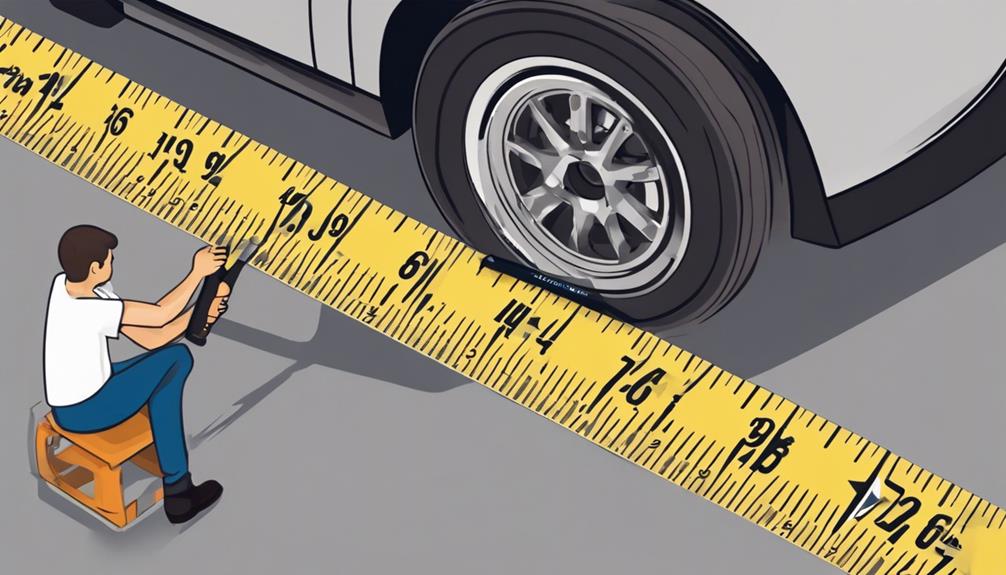
To ensure proper alignment of your tires, consider using DIY methods such as the string method for measuring distances and visual inspections of wear patterns to identify alignment issues. Here's how you can check your alignment at home:
- String Method Accuracy: Use a string to measure the distances between the front and rear tires at various points. This method can help you determine if your tires are properly aligned by comparing the measurements on both sides of the vehicle.
- Visual Inspection Techniques: Perform a visual inspection of your tire wear patterns. Uneven wear can indicate misalignment issues such as camber or toe misalignment, prompting you to take corrective measures.
- Alignment Gauges or Lasers: DIY alignment tools like alignment gauges or lasers can assist in assessing alignment angles for adjustments, providing more precise measurements for alignment corrections.
- Steering Wheel Centering and Vehicle Pulling: Check for steering wheel centering and any pulling to one side while driving. These signs can indicate misalignment and the need for adjustments to improve vehicle handling and tire longevity.
Tools Needed for DIY Alignment
When preparing for a DIY alignment, ensure you have the necessary tools such as a hydraulic jack, jack stands, a torque wrench, and a reliable tire pressure gauge. Alignment safety is paramount, so using a hydraulic floor jack with proper support like hockey puck inserts ensures safe lifting during alignment procedures.
The torque wrench plays a crucial role in securing lug nuts properly; it should be set to the recommended torque specification, for example, 140 foot pounds, to prevent any issues during alignment.
Checking and adjusting tire pressure is essential for optimal alignment results; a reliable tire pressure gauge, set to the recommended pressure, such as 48 PSI, should be used for accurate adjustments.
Additionally, using silicone lube for O-ring lubrication is optional but can ensure smooth operation during alignment tasks. By having these tools and following safety practices, you can efficiently perform a DIY alignment with confidence.
Tips for Efficient Tire Alignment
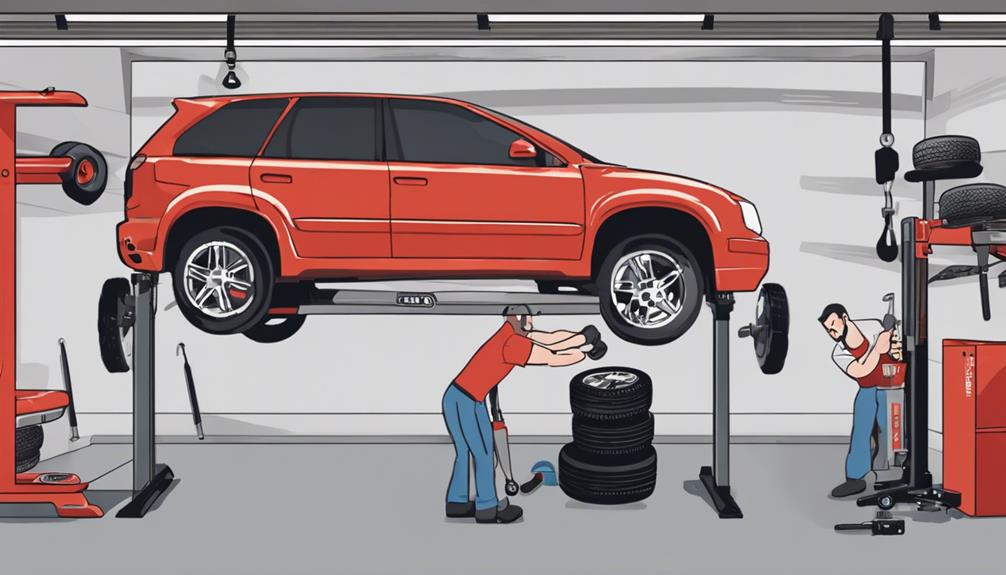
For optimal tire alignment efficiency, ensure precise adjustments are made using recommended specifications and appropriate tools. Proper alignment is crucial for reducing tire wear and enhancing fuel efficiency. Misalignment can lead to steering problems and uneven tire wear, impacting safety.
To efficiently align your tires, follow these tips:
- Regular Inspections: Check your alignment periodically, especially after hitting potholes or undergoing suspension repairs. This helps catch issues early, preventing costly repairs later on.
- Use Precision Equipment: Invest in quality alignment tools to ensure accurate wheel positioning. Precision alignment equipment guarantees the correct adjustments are made, maximizing tire lifespan and performance.
- Avoid Common Mistakes: Steering clear of common alignment errors such as neglecting adjustments or using incorrect specifications is key. These mistakes can lead to premature tire wear and compromise vehicle handling.
- Consider Professional Services: If unsure about the alignment process or facing complex issues, consulting a professional alignment service can provide expert assistance, ensuring your tires are aligned correctly for optimal performance.
Frequently Asked Questions
What Is the Most Efficient Way to Rotate Tires?
To efficiently rotate tires, consider tire wear and stick to a maintenance schedule. Following the recommended rotation pattern from your vehicle manual is crucial. Doing so ensures even wear, extends tire lifespan, and maintains optimal performance.
Can I Do a Tire Rotation Myself?
Yes, you can easily do a tire rotation yourself! With DIY tools like a jack and jack stands, you can tackle this essential tire maintenance task. Following your vehicle manual's rotation pattern ensures even tire wear and saves you money on service costs.
Is It Better to Rotate Tires Before Alignment?
Rotating tires before alignment ensures even wear patterns and sets the foundation for optimal performance. Alignment post-rotation enhances handling, steering control, and tire longevity. Prioritizing alignment after rotation is key for safety and efficiency.
Can I Rotate My Own Tires Without Balancing Them?
You can rotate your own tires without balancing them, but it's not ideal. Neglecting tire balancing could lead to uneven wear and affect handling. Consider professional balancing services or investing in equipment for optimal tire performance.
Conclusion
In conclusion, regular tire rotation and alignment are essential for maintaining optimal tire performance and extending tire lifespan. By following recommended patterns, monitoring wear, and using DIY techniques, you can ensure efficient tire care.
Remember to check alignment regularly, use proper tools, and follow these tips for a smoother driving experience. Stay proactive, stay safe, and stay on track with your tire maintenance routine.

